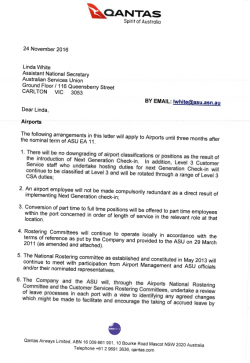Because for 99% of people it’s actually not harder… it’s easier. It’s the way the whole world is going.
"Easier", One would think ... but it's not the reality. Working in retail liquor and the airport (few days a week), I can see that the assumption is that the young/er generation is so cool, composed & comfortable with technology. But the reality is young customers have difficulty scanning QR codes or filling in online forms on a mobile device or even making payments using their digital wallets. The young/er generation given they are prone to "instant gratification", are bogged down if things don't go as planned. I have seen so many customers just give up signing up to the loyalty program, simply because the website throws an error. The error, on investigation, was caused by an incorrect entry made by the customer themselves (you don't have to add a 0 before your mobile number, if you are prefix'ing +61)

It might so strange, but on average, at least 50% of my customers have difficulty making a successful payment using their phones. Either they tap too early or too late. they don't realise that the phone (iPhone, in this case) will look for their FaceID or Fingerprint before authorising the payment. They have issues in locating the Wallet app on their iPhone. The reason for this is because, those accustomed to making payments using their phone do so double-clicking on the lock button or the home button, but never had to open the Wallet app to locate their cards.
I did ask a few customers to sign up for a promo we were running at the store and told them, once they have signed up successfully, they can save their loyalty card to their phone's Wallet. Guess what the first question/response was - "Is there a wallet in my phone?", followed by "How do I find it?" And this was customers who are roughly in the 23-28 age mark. Most customers were comfortable to take a screenshot of their loyalty barcode and save it to their Photos rather than save it to their Wallet (simply because they didn't know it was possible or that there is a Wallet app on their phone)
In the airport, majority of the customers don't realise the difference between the BP stored in their Wallet app and their credit card. They tap with their BP open and question why the EFTPOS machine isn't working. Oh, and another point I observed was, pax using digital BP's still pay with their physical card and pax with printed BP, pay with their phones

I think, at this point, one can safely assume that if a pax "knows" to do OLCI, store their BP to their phones, will also be aware that he/she can pay using their phones and vice-versa. Well, one doesn't have to do both to prove that they are a "digital literate", but one can assume.
In this author's humble opinion, I think the number of people who "know" their technology stuff is very less. Far more less when stress comes into play. Imagine standing in the queue to board, with 100's of pax behind you, you don't realise that you got your face mask on, and you are trying to open the BP using your FaceID, getting frustrated, the FA gently charades that you got your mask on, you get a light bulb moment, then you show the BP, pax behind you are already frustrated that it's taking very long to board .. Fun to watch, but sad to be that person ...
We, human beings are creatures of habit and the habit of having access to "basic" means to achieve a task is innate to us. Trying to replace this innate ability with technology, though viewed as an improvement, might turn to an impediment, if there is no system that provides the "basic" means. Yes, we can learn how to use OLCI, save BP to Wallet, scan the BP on entering the aircraft, but we also need to spare a thought to those that are technology-challenged for any number of reasons.
With all the above said, I use the self check-in options where possible. I do OLCI, get my BP on my phone, have backup power bank & cables on me, should I indulge in more Netflix that usual on my mobile phone. I only ever walk to an counter, if there is something wrong or I'm simply not able to get the machine to work. My points were mere observations on how people use/get accustomed to technology and getting to use it in real life.















